Auto part manufacturers rely on various joining mechanisms, with fasteners as the leading application. Automotive fasteners, as they are so called, are essential components that keep parts such as the wheels and brakes together.
Additionally, car fasteners are versatile and replaceable and come in many sizes and designs. Therefore, this article will look at the different types of automotive fasteners, the materials used, and considerations for choosing the right one.
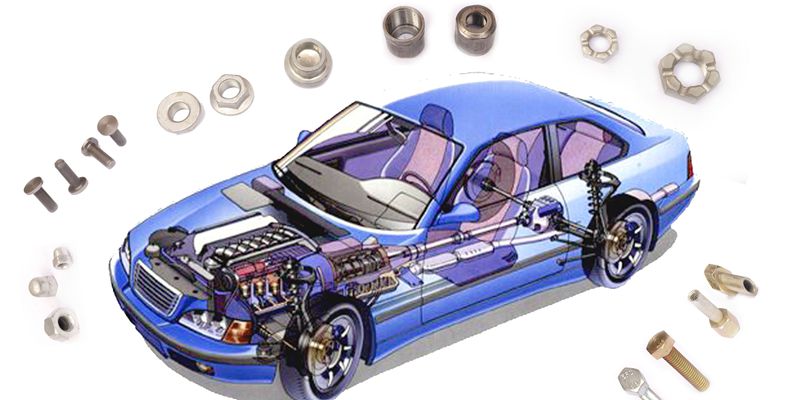 Definition and Importance of Automotive Fasteners
Definition and Importance of Automotive Fasteners
Automotive fasteners are tools such as bolts, washers, nuts, etc., used to join different parts during car part manufacturing. They mechanically hold auto parts together for firm positioning.
This broad definition of fasteners classifies them into permanent and temporary types. Generally, all car fasteners are temporary except the rivets. This implies that one should be able to remove the fastener and separate the parts from each other with no damage.
Furthermore, the function of automobile fasteners should not be mixed up with adhesives and glues. Automotive fasteners are different because they use tensional force to attach car parts. Hence, a vehicle remains intact during stressful conditions (even an accident) or after high-speed bumps.
10 Types of Automotive Fasteners
There are different designs and types of automotive fasteners, each with a particular function. The following are the most common fasteners used in the automotive part manufacturing industry.
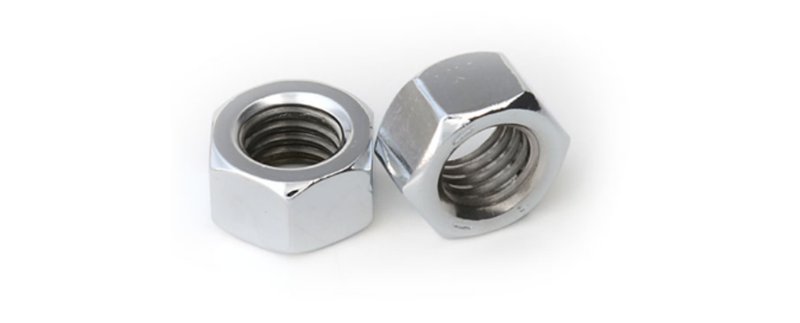 1. Nuts
1. Nuts
Nuts are small metal components made mainly from carbon steel with a widely common application as a joining component in car part manufacturing. They come in different sizes, shapes, and thread patterns. The most common is the hex nuts, known for their iconic hexagonally shaped head.
Hex nuts are general-purpose automobile fasteners with many subtypes. Other automotive nuts include:
- Flange nuts: A flange nut has a wide flange at one other end. This flange holds automotive parts firmly and reduces their likelihood of losing with time.
- Cap nuts: A cap nut is characterized by its ‘crown.’ The crown protects the exposed threads from damage. Hence, cap nuts assure maximum performance and safety in the automotive industry.
- Barrel nuts: They have a unique shape and threads perpendicular to the nut length. As a result, it provides secured connections between a thin metal sheet and a larger one.
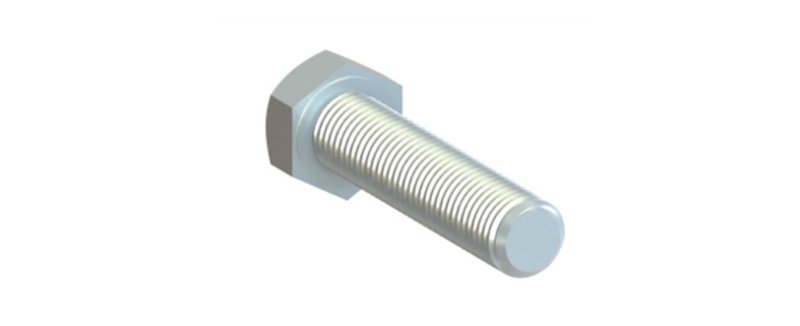 2. Bolts
2. Bolts
A bolt is a mechanical fastener that holds two or more unthreaded parts together. The body of a bolt contains external (male) threads that allow it to move in and out of the workpiece.
When manufacturers use bolts with nuts or washers, they effectively join engine components, exterior trims, and other things. The most popular automotive bolts include:
- Hub bolts: Hub bolts tightly connect the wheel to an axle. This type of automotive fastener consists of a cylindrical head and a threaded body. Additionally, the diameter and length of a hub bolt depend on the car’s size and design.
- Hex flange bolts: Hex flange bolts have a hexagonal-shaped head with an in-built washer. Auto part manufacturers use this fastener to firmly hold the transmission and engine together.
- U-bolts: A U bolt has the letter U shape with two threaded legs that extend from a smoothly curved base. It tightly holds the entire suspension system together without creating holes.
 3. Screws
3. Screws
A screw is a slender metal component with helical threads running through it. Screws and bolts have similar shapes and functions. However, a screw needs an internal thread, while a bolt can hold unthreaded parts together.
Often, screws are self-threading. This implies that they cut threads into the hole directly. Thus, they eliminate the initial tapping step. As with bolts and nuts, the hex screw is the most common automotive screw. It looks like the hex bolt without a shank. Other automotive screw fasteners include:
- Countersunk head screw: The screw has a circular and flat head that lies at the same level as an auto part surface.
- Pan head screw: Pan head screw has a raised head and is suitable for positioning car accessories like headlights.
- Truss head screw: Truss head screw has a mushroom-shaped head that bulges when installed. This automotive fastener is ideal for attaching car bumpers.
 4. Studs
4. Studs
Studs are fasteners with threads on one or both sides with no head. However, some have heads permanently fused to the part it holds. Though there are many types, wheel studs are most suitable for automobile use. Wheel studs are threaded at both ends. They work with a lug nut to place the wheel properly on the axle.
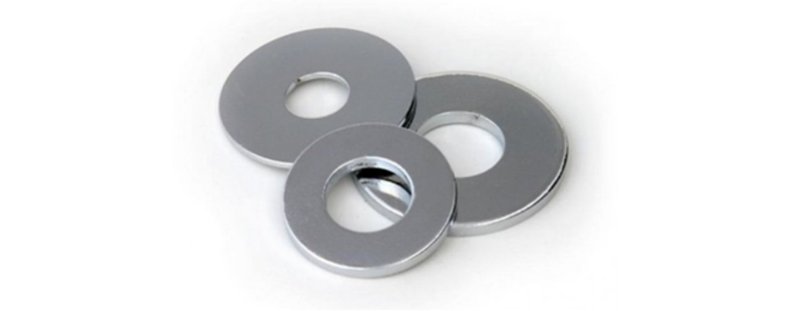 5. Washers
5. Washers
A washer is a thin flat plate with a hole in the middle. Despite their function, one cannot use them alone. Auto manufacturers most times use them together with bolts and nuts. They increase the tightening pressure of the nuts against a surface so that it does not loosen over time. Also, this prevents damage to a part surface.
Furthermore, washers come in different shapes and sizes. Auto manufacturers use washers in joints and axle bearing to prolong their lifespan while providing a smoother ride.
 6. Clips
6. Clips
Clips are automotive fasteners made of metals or plastics. They are cheap, versatile, and reusable. These clips come in various sizes and designs and offer more than an improved appearance.
Additionally, automotive clips help to position trim or upholstery perfectly on a car. They are important in the auto industry because they provide straightforward solutions for car assembly.
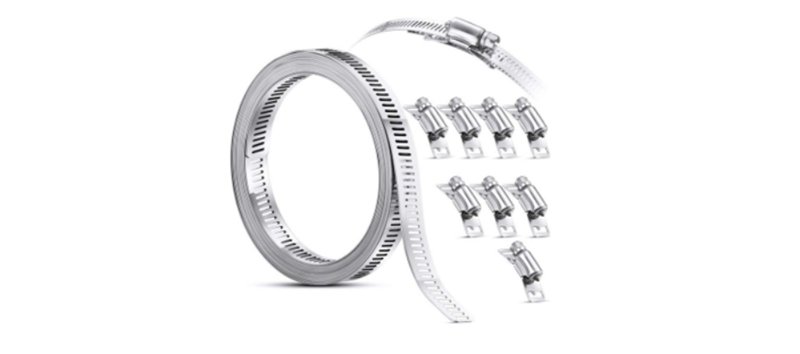 7. Clamps
7. Clamps
Clamps are mainly used to position hoses and tubes in a car engine firmly. There are various designs of clamps, the most common being metals. However, some are made of plastics to provide a lighter weight. Clamps generally come together with a screw to tighten it while holding the auto part in place.
 8. Springs
8. Springs
A spring fastener can create tension and then use the energy to pull two components together. They are simple and are made strictly from metals. Spring fasteners are important when assembling the components of a car engine.
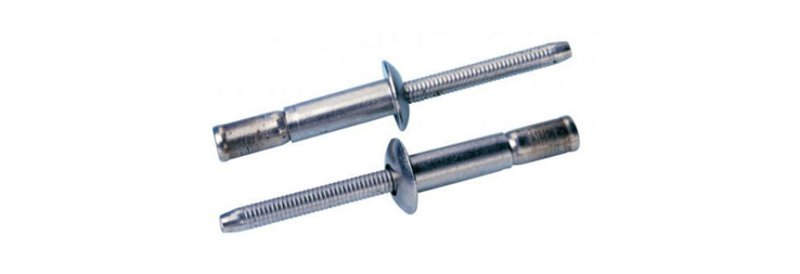 9. Rivets
9. Rivets
Rivets are a very important type of automotive fastener. They are made of metals and plastics. Metallic rivets are ideal when assembling a car’s structural components, like a chassis. Furthermore, rivets made from plastics are softer. As a result, they are used in non-structural parts of the car, such as the car’s dashboard.
Rivets are stronger alternatives to screws. They form a tighter and firmer joint than a screw of the same size would.
 10. Pins
10. Pins
Pins are automotive fasteners that position parts with minimal movements. The standard pin design is made from metals. Though it is common to find plastic pins, one cannot reuse them as they get destroyed when pulled out.
The most common type is the cotter pin. This pin further secures a bolt or screw, making it less likely to loosen over time.
Materials Used in Automotive Fasteners
The different types of automotive fasteners come in two main forms: metal or plastic components. These two materials have different properties and applications. Thus, the material makeup of car fasteners can serve as a means of classification.
Automotive Fasteners for Metals
Metals are the principal material for manufacturing automotive fasteners. One can use different types of automotive metal to suit one’s needs. However, aluminum, iron, and copper are the most common material one would find. These metals have varying physical and mechanical properties.
Metal automotive fasteners are very strong. They firmly hold heavy engine parts, suspension, and steering components in place. Furthermore, auto parts or fastener manufacturers often coat them with zinc metal to further enhance their mechanical properties. This surface finishing step is important for maximum corrosion resistance to improve durability.
Automotive Fasteners for Plastics
The use of plastic fasteners in the automotive industry is becoming popular due to their many benefits. Firstly, plastics are resistant to corrosion and UV rays. This implies that plastic automotive fasteners do not rust or absorb radiation. These properties make them suitable for joining exterior car parts. Additionally, they are more versatile and do not conduct electricity and heat.
Though many plastic types are suitable, vinyl is the most common type. Vinyl is strong and durable with high moisture resistance. Also, they stand out because of their environmentally-friendly nature. Vinyl is easy to recycle and requires minimal energy for manufacture.
 Common Automotive Fasteners Applications
Common Automotive Fasteners Applications
Automotive fasteners keep the whole vehicle running. They are important components to hold other car parts in place. The following are some applications of the different types of car fasteners.
1. Engine Components
The main components of a car engine are the cylinder block, cylinder head, crankshaft, combustion chamber, and valves. They all work together to convert chemical energy to mechanical energy used to propel the car forward.
Auto part manufacturers use bolts and nuts to assemble engine components with the cylinder block as the main supporting structure. These automotive fasteners are what provides power to the engine.
2. Suspension and Steering Systems
The various parts of the suspension and steering system move the wheels in the right direction. In addition, the springs in the suspension absorb shock to ensure the passenger’s safety.
The steering wheel is joined to a steering column attached to pivots, rods, and gears. This connection gives the driver total control of the steering wheel while driving.
3. Body and Interior Trim
Automotive fasteners keep the body, interior trim, and car going. Auto part manufacturers use a wide selection of springs, nuts, clips, screws, and bolts on a car body.
Manufacturers use mainly metal automotive fasteners because of their high tensile strength. However, plastic fasteners are ideal for keeping interior components like car dashboards and door panels in place.
4. Electrical Systems
Fasteners play a major role in battery design for electric vehicles, such as producing components of electric vehicle batteries. Screws, nuts, and washers provide premium protection to batteries.
Furthermore, car fasteners are relevant for electric battery assembly and casing. They also prevent unwanted interactions between the battery components and external factors.
5. Wheels
Automotive fasteners firmly hold the wheels onto the car. They are very important, and using the wrong fastener poses a safety risk. The lug nuts, wheel studs, and wheel bolts all attach the wheel to the axle, keeping the car stable when in motion.
Tips for Choosing the Right Automotive Fasteners
Using the right fastener for your automotive application determines the success of your operation. It is important to carefully consider the following before choosing a car fastener.
Applications of Car Fasteners
The application of the automotive part will play a huge role in selecting the right material. For example, fasteners applicable in a harsh environment will most likely be made using a metal due to their mechanical properties. Therefore, a dashboard would probably require a plastic fastener compared to the engine. As a result, the application will determine the material, and the type of fastener required.
Threading
Fasteners can either have coarse or fine threading. On the one hand, using coarse threaded fasteners will ensure faster assembly. On the other hand, finely threaded fasteners are slower to assemble due to the travel distance but provide a more secure connection.
Both have their benefits. However, you need to choose threading that provides the utmost benefit for your part.
Material of Construction
There are several types of materials suitable for constructing a fastener. The right material should have properties that make it suitable for its purpose. For example, they should be corrosion-resistant and strong enough to hold the parts together firmly. Auto manufacturers can explore the advantages of metals and plastics for such requirements.
Exposure of the Fasteners
Exposure of the car fastener can be to heat or vibration. Almost all parts of a moving vehicle radiate heat. As a result, the right automotive fasteners should withstand the temperature at the point of use.
Also, since vehicle parts experience back-and-forth motion as they move, an ideal automotive fastener should be able to remain firm when experiencing continuous shaking movements.
How to Eliminate Risks to Loosen Automotive Fasteners?
Loose fasteners can lead to serious car breakdowns. In addition to choosing the right fastener, it is important to take necessary precautions to avoid the self-loosening of car fasteners. You can employ the following tips to keep your fastener in place.
Use Strong and Lightweight Material
For automotive applications, it is important to use a strong and lightweight material. You can be sure that a metal automotive fastener for a metal part will give a tighter finish. For plastic automotive fasteners to function well, they are more suited for softer parts like the interior trim.
Regular Maintenance
It is important to regularly check car fasteners to avoid them loosening to the point where they fall off. During this routine check, it is important to retighten these fasteners and replace worn-out ones to avoid repair costs.
Use of Adhesives
Also, you can use adhesives alongside bolts for more effective fastening. They help to provide more rigidity and less vibration. However, they make disassembly difficult.
Conclusion
Fasteners are important in automotive part assembly because they hold the entire car together. Components like engines, brakes, and wheels cannot function in their absence. Automotive fasteners come in different types and designs with unique functions.
FAQs
What causes automotive fasteners to loosen?
After installation, fasteners may gradually loosen due to many factors, including under and over-tightening, minor movements due to vibrations, and thermal expansion.
What are the three main types of automotive fasteners?
Bolts, nuts, and washers are the main types of automotive fasteners. Furthermore, hex-headed bolts and screws are the most common type.
How many fasteners are in a car?
A car contains an average of 3,500 fasteners in every corner.




